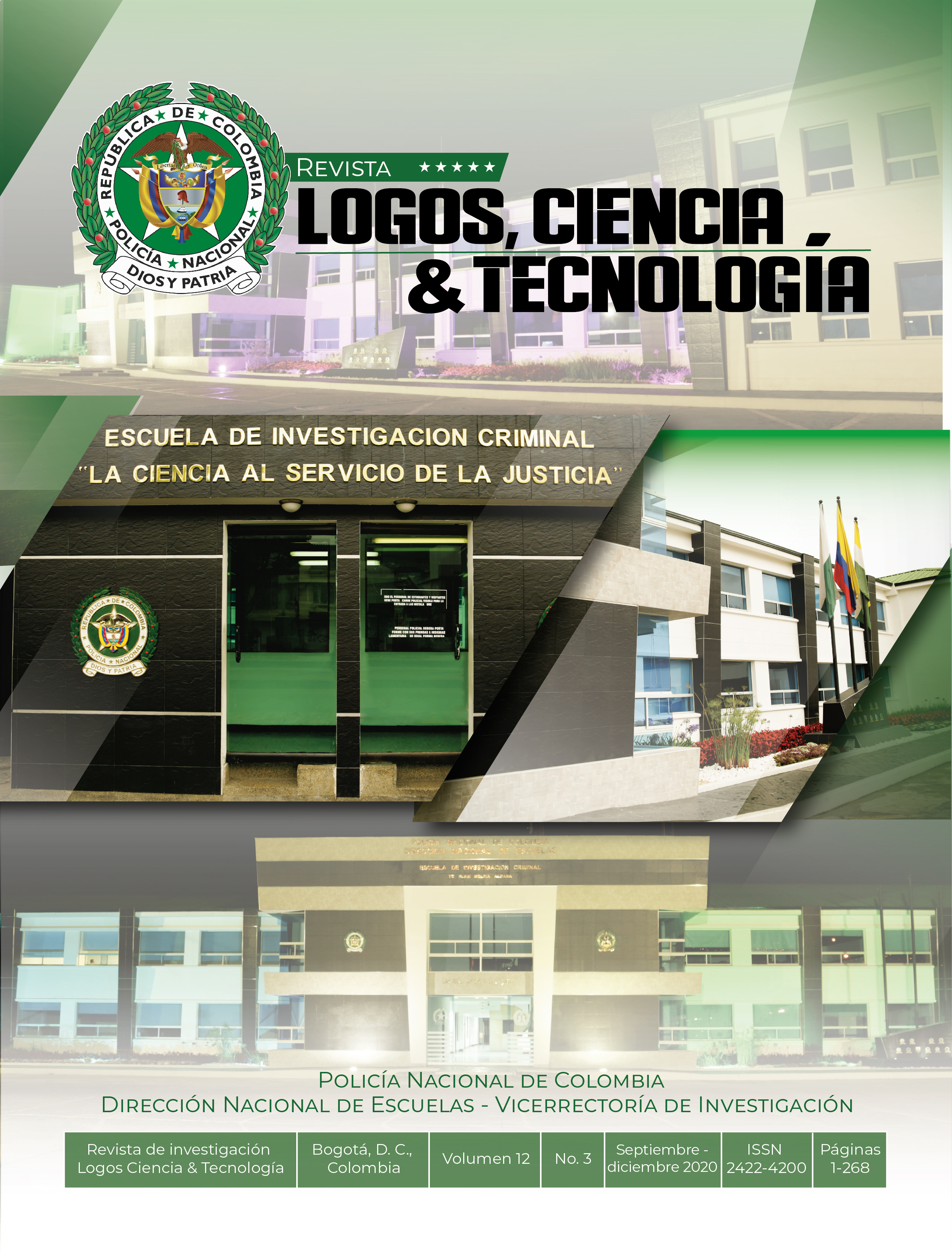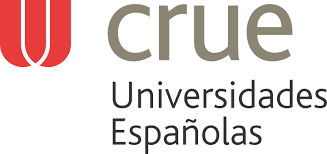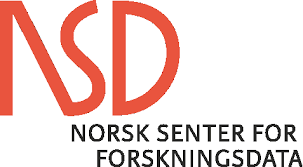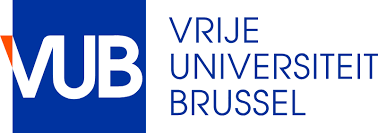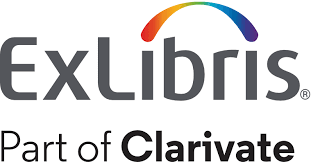Software para la obtención de un modelo de propagación estadístico en tiempo real
DOI:
https://doi.org/10.22335/rlct.v12i3.1266Palabras clave:
Propagación, radio enlace, estadístico, software, modeloResumen
El proceso de investigación se basó en el diseño de una aplicación de escritorio para pruebas de cobertura en interiores y exteriores de enlaces inalámbricos en la banda de frecuencias de 2,4 GHz con el uso de software libre, que permite capturar, procesar, analizar, calcular y generar un modelo matemático de tipo estadístico en tiempo real, del hardware del control de acceso al medio (MAC) incorporado en la tarjeta de red inalámbrica de una computadora portátil que detecta el nivel de potencia, las portadoras y otras variables dentro de los tramas de información que transmiten las estaciones base. La metodología es experimental. Primero, se analizan diferentes modelos de propagación, luego se estudian las herramientas de prueba existentes y luego se comparan las tecnologías y herramientas de hardware y software; se selecciona el lenguaje de programación y finalmente se genera el código y la interfaz gráfica de la aplicación con el fin de visualizar el modelo matemático expresado mediante el uso de mínimos cuadrados con el algoritmo de Levenberg-Marquardt y compararlo con modelos de propagación reconocidos.
Descargas
Referencias
Ambroziak, S. J., & Katulski, R. J. (2014). Path loss modelling in the untypical outdoor propagation environments. 2014 31th URSI General Assembly and Scientific Symposium, URSI GASS 2014, 3–6. https://doi.org/10.1109/URSIGASS.2014.6929655
Ayadi, M., Ben Zineb, A., & Tabbane, S. (2017). A UHF Path Loss Model Using Learning Machine for Heterogeneous Networks. IEEE Transactions on Antennas and Propagation, 65(7), 3675–3683. https://doi.org/10.1109/TAP.2017.2705112
Bhanage, G. (2017). AMSDU vs AMPDU : A Brief Tutorial on WiFi Aggregation Support. 1–3.
Bouleanu, I., Helbet, R., & Craiu, N. (2016). The Quality of the Propagation Prediction with Radio Mobile for Tetra Communication Systems. International Conference KNOWLEDGE-BASED ORGANIZATION, 22(3), 510–514. https://doi.org/10.1515/kbo-2016-0088
Bureau, R. (2011). HANDBOOK Spectrum Monitoring. International Telecommunication Union (ITU), 168.
Chen, C. C., Chen, Y. R., Lu, W. C., Tsai, S. C., & Yang, M. C. (2017). Detecting amplification attacks with Software Defined Networking. 2017 IEEE Conference on Dependable and Secure Computing, 195–201. https://doi.org/10.1109/DESEC.2017.8073807
Chen, Z., & Zhang, Y. (2017). Distributed spectrum monitoring system based on RSSI optimization algorithm. Progress in Electromagnetics Research Symposium, 2017-Novem, 2350–2355. https://doi.org/10.1109/PIERS-FALL.2017.8293529
Choudhary, S., & Dhaka, D. K. (2015). Path loss Prediction Models for Wireless Communication Channels and its Comparative Analysis. International Journal Of Engineering, Management & Sciences (IJEMS), 2(3), 38–43.
Cornejo, & Rebolledo. (2016). Estimación De Parámetros En Modelos No Lineales: Algoritmos Y Aplicaciones Estimation of Parameters in Nonlinear Models: Algorithms and Applications. Revista EIA, 13(25), 81–98. https://doi.org/10.24050/reia.v13i25.1019
Cui, M., Yang, K., Xu, X. L., Wang, S. D., & Gao, X. W. (2016). A modified Levenberg-Marquardt algorithm for simultaneous estimation of multi-parameters of boundary heat flux by solving transient nonlinear inverse heat conduction problems. International Journal of Heat and Mass Transfer, 97, 908–916. https://doi.org/10.1016/j.ijheatmasstransfer.2016.02.085
Elsheikh, E. A. A., Islam, M. R., Habaebi, M. H., Ismail, A. F., & Zyoud, A. (2017). Dust Storm Attenuation Modeling Based on Measurements in Sudan. IEEE Transactions on Antennas and Propagation, 65(8), 4200–4208. https://doi.org/10.1109/TAP.2017.2715369
Forsyth, J., & Zarrouk, S. J. (2018). A Review of Static Formation Temperature Test Evaluation Methods. November.
Giustiniano, D., Bednarek, M., Bourchas, T., & Lenders, V. (2015). Deep inspection of the noise in WiFi time-of-flight echo techniques. MSWiM 2015 - Proceedings of the 18th ACM International Conference on Modeling, Analysis and Simulation of Wireless and Mobile Systems, 5–12. https://doi.org/10.1145/2811587.2811621
Guerrero-Higueras, A. M., García-Ortega, E., Sánchez, J. L., Lorenzana, J., & Matellán, V. (2013). Schedule WRF model executions in parallel computing environments using Python. 3rd Symposium on Advances in Modeling and Analysis Using Python. AMS Annual Meeting. Austin, TX, EEUU., 1–6.
Günther, S. M., Leclaire, M., Michaelis, J., & Carle, G. (2014). Analysis of injection capabilities and media access of IEEE 802.11 hardware in monitor mode. IEEE/IFIP NOMS 2014- IEEE/IFIP Network Operations and Management Symposium: Management in a Software Defined World. https://doi.org/10.1109/NOMS.2014.6838262
Hamim & Jamlos, M. (2014). An overview of Outdoor Propagation Prediction Model. IEEE International Sympousium on Telecommunication Technologies, 385–388.
Harwani, B. M. (2018). Qt5 Python GUI Programming.
ITU, I. T. U. (2015). Manual Comprobación Técnica del Espectro. In Manual (Vol. 1). https://www.itu.int/dms_pub/itu-r/opb/hdb/R-HDB-21-2015-PDF-S.pdf
Kasampalis, S., Lazaridis, P. I., Zaharis, Z. D., Bizopoulos, A., Zettas, S., & Cosmas, J. (2014). Comparison of Longley-Rice, ITU-R P.1546 and Hata-Davidson propagation models for DVB-T coverage prediction. IEEE International Symposium on Broadband Multimedia Systems and Broadcasting, BMSB, 29, 2–4. https://doi.org/10.1109/BMSB.2014.6873518
Kaveh, K., Duc Bui, M., & Rutschmann, P. (2017). A comparative study of three different learning algorithms applied to ANFIS for predicting daily suspended sediment concentration. International Journal of Sediment Research, 32(3), 340–350. https://doi.org/10.1016/j.ijsrc.2017.03.007
Kochláň, M., Miček, J., & Ševčík, P. (2014). 2.4GHz ISM Band Radio Frequency Signal Indoor Propagation. Proceedings of the 2014 Federated Conference on Computer Science and Information Systems, 2, 1027–1034. https://doi.org/10.15439/2014f299
Lei, K., Ma, Y., & Tan, Z. (2015). Performance comparison and evaluation of web development technologies in PHP, Python and Node.js. Proceedings - 17th IEEE International Conference on Computational Science and Engineering, CSE 2014, Jointly with 13th IEEE International Conference on Ubiquitous Computing and Communications, IUCC 2014, 13th International Symposium on Pervasive Systems, 661–668. https://doi.org/10.1109/CSE.2014.142
Malik, M. H., Aydin, M., Shah, Z., & Hussain, S. (2014). Stochastic model of TCP and UDP traffic in IEEE 802.11b/g. Proceedings of the 2014 9th IEEE Conference on Industrial Electronics and Applications, ICIEA 2014, 2170–2175. https://doi.org/10.1109/ICIEA.2014.6931531
Medvidovic, N., & Taylor, R. N. (2010). Software Architecture: Foundations , Theory , and Practice. Africa, 471–472. https://doi.org/10.1145/1810295.1810435
Morocho-Yaguana, M., Ludena-Gonzalez, P., Sandoval, F., Poma-Velez, B., & Erreyes-Dota, A. (2018). An optimized propagation model based on measurement data for indoor environments. Journal of Telecommunications and Information Technology, 2018(2), 69–75. https://doi.org/10.26636/jtit.2018.117217
Neidhardt, E., Uzun, A., Bareth, U., & Kupper, A. (2013). Estimating locations and coverage areas of mobile network cells based on crowdsourced data. Proceedings of 2013 6th Joint IFIP Wireless and Mobile Networking Conference, WMNC 2013. https://doi.org/10.1109/WMNC.2013.6549010
Newville, M., & Stensitzki, T. (2018). Non-Linear Least-Squares Minimization and Curve-Fitting for Python Matthew Newville, Till Stensitzki, and others.
Pinnagoda, S. S. (2017). Comprobación Técnica International de las emisiones (servicios terrenales).
Ponomarenko-Timofeev, A., Pyattaev, A., Andreev, S., Koucheryavy, Y., Mueck, M., & Karls, I. (2016). Highly dynamic spectrum management within licensed shared access regulatory framework. IEEE Communications Magazine, 54(3), 100–109. https://doi.org/10.1109/MCOM.2016.7432155
Rademacher, M., & Kessel, M. (2015). An Empirical Evaluation of the Received Signal Strength Indicator for fixed outdoor 802.11 links. VDE ITG-Fachbericht Mobilkommunikation, 20, 62–66.
Recommendation P-1406-2 ITU-R. (2015). RECOMMENDATION P.1406-2 Propagation effects relating to terrestrial land mobile and broadcasting services in the VHF and UHF bands. Electronic Publication, P-series. https://www.itu.int/rec/R-REC-P.1406-2-201507-I/en
Robyns, P., Quax, P., & Lamotte, W. (2015). Injection attacks on 802.11n MAC frame aggregation. Proceedings of the 8th ACM Conference on Security & Privacy in Wireless and Mobile Networks - WiSec ’15, 1–11. https://doi.org/10.1145/2766498.2766513
Rodofile, N. R., Radke, K., & Foo, E. (2015). Real-Time and Interactive Attacks on DNP3 Critical Infrastructure Using Scapy. Conferences in Research and Practice in Information Technology Series, 161(January), 67–70.
Rosati, S. (2014). Wireless access point spoofing and mobile devices geolocation using swarms of flying robots Master optional semester project, spring 2014.
Salvadè, A., Guggiari, P., & Lanini, M. (2004). Basis for a UMTS measurement recommendation. SUPSI–DTI Alta Frequenza Phone.
Sandhya, S., Purkayastha, S., Joshua, E., & Deep, A. (2017). Assessment of website security by penetration testing using Wireshark. 2017 4th International Conference on Advanced Computing and Communication Systems, ICACCS 2017, 4–7. https://doi.org/10.1109/ICACCS.2017.8014711
Sati, G., & Singh, S. (2014). A review on outdoor propagation models in radio communication. International Journal of Computer Engineering & Science, 4(2), 64–68.
Scapy. (2018). Welcome to Scapy’s documentation! — Scapy 2.4.0-dev documentation. https://scapy.readthedocs.io/en/latest/index.html
SciPy v1.2.1 Reference Guide. (2018). https://docs.scipy.org/doc/scipy/reference/generated/scipy.optimize.curve_fit.html
Stüber, G. L. (2017). Principles of mobile communication: Fourth edition. In Principles of Mobile Communication: Fourth Edition. https://doi.org/10.1007/978-3-319-55615-4
Toushmalani, R., Parsa, Z., & Esmaeili, A. (2014). Comparison result of inversion of gravity data of a fault by Cuckoo Optimization and Levenberg-Marquardt methods. Research Journal of Pharmaceutical, Biological and Chemical Sciences, 5(1), 418–427. https://doi.org/10.1186/2193-1801-2-462
Yacoub, M. D. (2019). Foundations of Mobile Radio Engineering. In Foundations of Mobile Radio Engineering. https://doi.org/10.1201/9780203755563
Yaghoubi, F., Abbasfar, A. A., & Maham, B. (2014). Energy-efficient RSSI-based localization for wireless sensor networks. IEEE Communications Letters, 18(6), 973–976. https://doi.org/10.1109/LCOMM.2014.2320939
Yassin, M., & Rachid, E. (2015). A survey of positioning techniques and location based services in wireless networks. 2015 IEEE International Conference on Signal Processing, Informatics, Communication and Energy Systems, SPICES 2015, Ii. https://doi.org/10.1109/SPICES.2015.7091420
Zeng, P., Xiao, J., He, J., & Yu, H. (2017). RSSI positioning method based on frequency-hopping spread spectrum technology. 2(12).
Zhou, X., Jacobsson, M., Uijterwaal, H., & Mieghem, P. (2010). IPv6 delay and loss performance evolution. International Journal of Communication Systems, 23(5), 633–652. https://doi.org/10.1002/dac.916
Zou, H., Chen, Z., Jiang, H., Xie, L., & Spanos, C. (2017). Accurate indoor localization and tracking using mobile phone inertial sensors, WiFi and iBeacon. 4th IEEE International Symposium on Inertial Sensors and Systems, INERTIAL 2017 - Proceedings, 1, 1–4. https://doi.org/10.1109/ISISS.2017.7935650
Descargas
Publicado
Número
Sección
Licencia
Derechos de autor 2020 Revista Logos Ciencia & Tecnología

Esta obra está bajo una licencia internacional Creative Commons Atribución 4.0.
Esta revista provee acceso libre e inmediato a su contenido (https://creativecommons.org/licenses/by-nc-nd/4.0/), bajo el principio de hacer disponible gratuitamente la investigación al público y apoyar a un mayor intercambio de conocimiento global.
